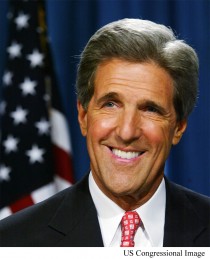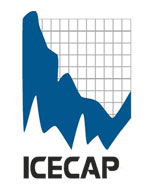By Joseph D’Aleo, Op Ed Contributor

In 2007, a divided Supreme Court ruled that the Environmental Protection Agency must treat carbon dioxide and other greenhouse gases as “pollutants,” and must therefore analyze whether the increasing concentrations in atmospheric carbon might reasonably be anticipated to endanger human health and welfare. The court may be on the verge of facing this issue once again.
To be clear, the court did not mandate regulation in 2007; rather, it mandated that the EPA go through what is known as an “Endangerment Finding” process. The EPA did so and on Dec. 15, 2009, issued its ruling that carbon dioxide and other greenhouse gases must be regulated. This EPA finding and associated rulings were immediately challenged in the federal D.C. Circuit Court, which initially ruled in favor of the EPA.
Given the two dissenting judges in the circuit’s en banc decision just before Christmas, the matter will very likely go to the Supreme Court.
If allowed to stand, the very existence of the EPA’s Endangerment Finding requires regulation that would significantly increase U.S. fossil fuel and electricity prices—negatively affecting job creation as well as energy, economic and national security.
To many scientists, this situation seems incredible, given the ample evidence that the EPA’s finding is flawed. In its finding, the EPA claimed with 90 to 99 percent certainty that observed warming in the latter half of the 20th century resulted from human activity. The EPA bases its finding upon three “lines of evidence,” none of which hews to the most credible empirical data available.
First, the EPA claims that the global average surface temperature has been rising in a dangerous fashion over the last 50 years, in large part due to human-caused increases in atmospheric carbon dioxide concentrations. But “global warming” has not been global, nor has it even set records in the regions where warming has occurred. For example, over this time period, while the Arctic has warmed, the tropical oceans had a flat trend, and the Antarctic was cooling. The most significant warming during this period occurred in the Northern Hemisphere, north of the tropics. But over the last 130 years, the 1930s still has the most U.S. state high temperature records. Over the past 50 years, there were more new state record lows set than record highs. In fact, roughly 70 percent of the current state record highs were set before 1940.
Second, the EPA argues that in the tropics, the upper troposphere is warming faster than the lower troposphere, and the lower troposphere is warming faster than the surface, all due to rising carbon concentrations. This is totally at odds with multiple robust, consistent, independently derived empirical data sets, all showing no statistically significant positive (or negative) trend in temperature, and thus no difference in trend by altitude.
Third, the EPA relied upon climate models predicated on this theory. All of these models fail standard model validation and forecast reliability tests. The models all forecast rising temperatures beyond 2000, although the global average surface temperature has actually been flat. This is not surprising because the EPA never carried out any published forecast reliability tests.
The bottom line is that no scientist or team of scientists has come up with an empirically validated theory proving what the EPA claims it knows with 90 to 99 percent certainty. Moreover, if the EPA’s three lines of evidence are so easily refuted, then the EPA’s strong claim of causality, that higher carbon emissions affect sea levels and severe storm, flood and drought frequency, is on ever shakier ground. This is an inevitable problem when a person or agency tries to prove too much.
Joseph D’Aleo, Certified Consulting Meteorologist, Fellow of the American Meteorological Society
--------
A full op ed with 12 signatories now posted on WUWT. Jackson’s departure Details to follow. Jackson’s departure related to the fake email names and emails in which she promises to crucify energy providers had congressional testimony as a big part of her 2013. But the damage is done. They are issuing hundreds of regulations (as many as 95 in one day) that Obama said we can always review and remove but that requires the approval of both house and senate and signature by the President. Industry and energy will be facing a regulatory nightmare for years to come because of the radical environmentalism of Jackson.
By Steve Goreham
Originally published in The Washington Times. Republished with permission of author
With barely a whimper from the media, John Kerry is President Obama’s official nominee for Secretary of State. Mr. Kerry is the senior Senator from Massachusetts, chairman of the Senate Foreign Relations Committee, and was the 2004 presidential nominee of the Democratic Party. Kerry has also been a long-time crusader in the effort to try to stop global warming.

With the possible exception of former Vice President Al Gore, Senator Kerry has been the most fervent climate hawk in the United States Congress. Kerry believes that “catastrophic climate change represents a threat to human security, global stability, and - yes - even to American national security” and that global warming is man-made. He further states that “Once you accept the science, it’s clear that such massive environmental change will create dislocation, destruction, chaos, and conflict.”
Senator Kerry and his wife authored the 2008 book This Moment on Earth: Today’s New Environmentalists and Their Vision for the Future, asking the question, “And what, in the face of so many powerful interests defending the status quo, are each of us willing to do, today and tomorrow, to force a change of course?”
True to his convictions, Kerry co-sponsored the American Power Act in 2010. The bill would have established a US cap-and-trade carbon trading system, but died in the Senate without a vote.
Senator Kerry parrots the “science” of man-made global warming with the starry-eyed ideology of a young environmentalist. After tornados killed 50 people in the Southeastern US in February 2008, Kerry appeared on MSNBC and concluded that man-made warming was to blame: “...this is related to the intensity of the storms that is related to the warming of Earth...the storms are more intensive and the rainfall is more intense...” But a simple look at data from the National Climatic Data Center shows that strong tornado activity in the US has decreased since the 1970s.
In a 2009 interview with the Huffington Post, Mr. Kerry stated, “Nowhere is the connection between climate and security more direct than in South Asia - home to Al Qaeda. Scientists now warn that the Himalayan glaciers which supply fresh water to a billion people in the region could disappear completely by 2035.” He was referring to a statement in Chapter 10 of the 2007 Fourth Assessment Report of the Intergovernmental Panel on Climate Change.
But in 2010, Dr. Murari Lal, the coordinating lead author for Chapter 10, admitted that the “melting by 2035” statement was not from peer-reviewed literature, but had been added to Chapter 10 to try to put pressure on world leaders. An accepting Senator Kerry fell prey to the ruse.
In another example last July, Senator Kerry warned about rising seas, stating, “With the melting of the West Antarctic Ice Sheet alone, global sea levels could rise by as much as 3.26 meters in the coming years. And the Pacific and Atlantic coasts may be in for a 25 percent increase above average levels by century’s end.” But, empirical data indicate growth of both Antarctic sea ice and land ice over the last 30 years.
Data from the Climatic Research Unit at the University of East Anglia show no increase in global surface temperatures for more than ten years. Nevertheless, Mr. Kerry continues his climate crusade. In a speech on the Senate floor in August of this year, Kerry declared that global climate change was “as dangerous” as nuclear weapons in the hands of Iran. President Obama recently said that climate change would be one of his top three priorities for his second term. Mr. Kerry may be just the man to lead the crusade.
During the next four years, look for Secretary Kerry to boost efforts in a futile fight to stop global warming. The real problems of the world, such as hunger, poverty and disease in developing nations, terrorism, and nuclear proliferation, may need to take a back seat.
Steve Goreham is Executive Director of the Climate Science Coalition of America and author of the new book The Mad, Mad, Mad World of Climatism: Mankind and Climate Change Mania.
Congressional overseers seek to determine whether the cabinet agencies under President Obama (specifically the Environmental Protection Agency), who promised “an unprecedented level of openness in government,” have hidden communications about official business with the use of private and alias email accounts.
Michigan Rep. Fred Upton, chairman of the House Energy and Commerce Committee, and Subcommittee on Oversight and Investigations Chairman Cliff Stearns (R-Fla.), wrote in a Dec. 13 letter to EPA Administrator Lisa Jackson “that you describe fully the nature and extent of this practice.” Chris Horner, author of The Liberal War on Transparency, first discovered the existence of the accounts as he researched the book. He and his colleagues at the Competitive Enterprise Institute have sued for records from the alias accounts.
At the moment the concern is over transparency, although there are countless potentially embarrassing issues that could have been addressed by Jackson and others over the secret email accounts. Among them are regional administrators whose practice is to
“crucify” oil and gas companies; EPA’s war against coal companies and utilities; excessive, controversial regulations; and heinous experiments on human beings. Other than that there probably isn’t much to conceal from their critics.
The concerns Upton, Stearns, and other congressional overseers (in addition to Horner) have is whether EPA’s records custodians responded to FOIA requests for Jackson’s correspondence by searching her (and others’![]() alias accounts for relevant materials. The committee leaders asked Jackson for “a detailed description of EPA’s procedures that ensure that all your ‘internal’ email accounts...are included in any search for responsive information or materials when EPA receives Congressional committee requests for information or documents...”
alias accounts for relevant materials. The committee leaders asked Jackson for “a detailed description of EPA’s procedures that ensure that all your ‘internal’ email accounts...are included in any search for responsive information or materials when EPA receives Congressional committee requests for information or documents...”
According to Politico (and EPA’s acknowledgment), Jackson used an email alias of “Richard Windsor,” created by the combination of the name of her dog and her former hometown of East Windsor Township, N.J. A day before Upton and Stearns sent their letter to Jackson, Texas Rep. Ralph Hall, chairman of the House Committee on Science, Space and Technology, received an explanation from EPA after he had sent a request to EPA’s Inspector General to review whether the agency complied with the Freedom of Information Act and Federal Records Act.
“Given the large volume of emails sent to the public account - more than 1.5 million in fiscal year 2012, for instance - the secondary email account is necessary for effective management and communication between the Administrator and colleagues,”
Associate Administrator Arvin Ganesan said in the Dec. 12 letter, which was provided by EPA to Politico. He explained that the practice is “commonly employed in both the public and the private sector.”
Clearly Jackson’s flacks are trying to play the congressmen for fools. Her email address for the public to use is “jackson.lisap@epa.gov,” which are probably messages she never sees. The only reason to use an alias that not only is a completely different name, but also a different gender, is to throw any curious outside parties off track about who’s actually involved in the conduct of internal government business. Proper formatting of an alternative email address for Jackson would have been to simply rearrange her name, use initials, or some other identifiable construct.
Other government watchdogs weren’t buying the reasons for the “Windsor” alias either.
“ don’t know any other agency that does this,” said Anne Weismann, chief counsel of the watchdog group Citizens for Responsibility and Ethics in Washington, to Politico. “Why would you pick a fictitious name of someone of different gender? To me it smacks of...trying to hide.”
Horner said the excuses were inventions to avoid transparency. In a piece for the Washington Examiner last month, he recounted how Jackson’s counterpart during the Clinton administration, Carol Browner, also maintained an extra email account. When people armed with FOIA requests asked for her electronic records, it turned out that upon search and examination that Browner’s hard drive, amazingly, had been “reformatted.”
He sees a similar pattern developing with the Obama administration, for two reasons.
“One reason is a demonstrated bureaucratic practice of inventing excuses to not search or produce certain files when they don’t want them released,” Horner wrote. “Another is that Obama officials have moved government over to private email accounts, private computers and even privately owned and managed servers. All of these acts indicate a desire to hide what the supposedly most transparent administration in history is up to.”
After Rep. Hall’s request, the EPA Inspector General initiated an audit of the handling of the agency’s electronic records. As the Congressman wrote, “unfortunately, time and again, actions by the Administration on transparency have fallen far short of the President’s rhetoric, in many instances trending away from transparency and toward greater secrecy.”
Hall’s letter (also signed by five other Republican House members) cited similar examples to evade transparency that were employed by employees of the National Oceanic and Atmospheric Administration, the White House Office of Science and Technology Policy, and the Department of Energy’s Loan Program Office. In the case of the latter, Hall noted how the House Energy and Commerce Committee discovered that “at least fourteen DOE officials used non-government accounts to communicate about the loan guarantee program and other public business.” NLPC has detailed many puzzling and outright absurd examples of crony capitalism and inappropriate awards of Recovery Act funds to corporations for the ostensible purpose of creating “green jobs.”
That top officials throughout the Obama administration utilized deeply disguised email accounts may or may not reveal more troublesome conduct, and ought to be explored further. But whether it does or not, there’s already plenty of evidence in the public record that the ethical compass was (and is) broken.
Paul Chesser is an associate fellow for the National Legal and Policy Center and publishes CarolinaPlottHound.com, an aggregator of North Carolina news.


